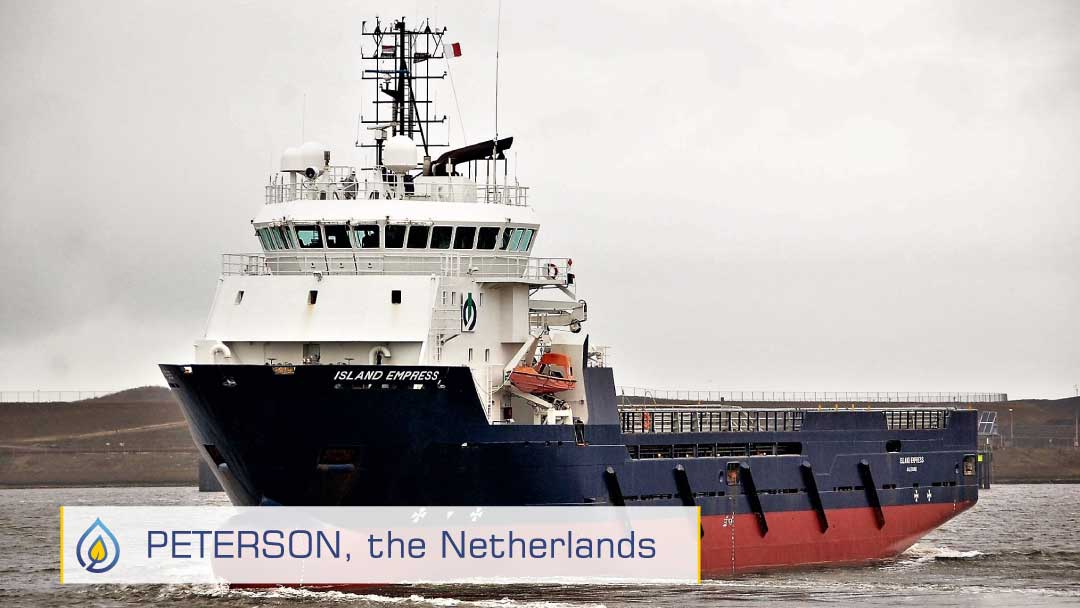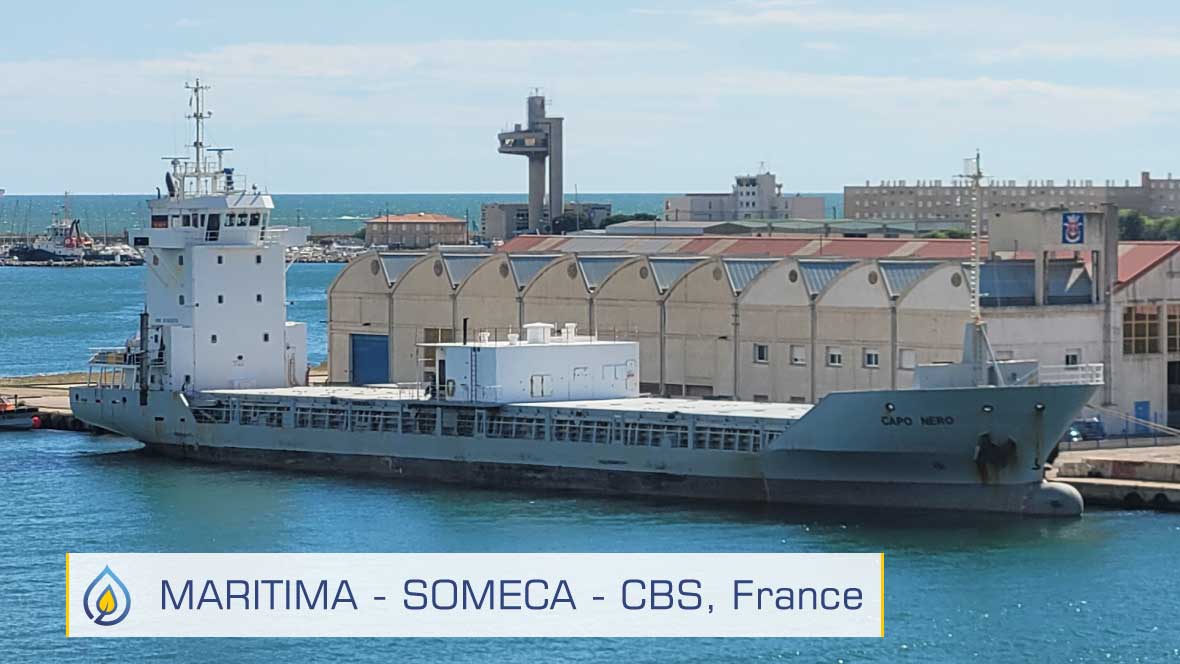In September 2021, a few months after acquiring the exclusive distribution rights of XBEE in Benelux, the fuel company decides to commission the European consultancy firm TAUW, which field of expertise consists in environmental and sustainable advice, to conduct an emission study of the exhaust gas emissions from the main engine of the Island Empress, then chartered by Peterson Energy Logistics company in Rotterdam, the Netherlands.
Measurements have been carried out without and with XBEE respectively on September 23, 2021 and January 13, 2022. The ship is a platform supply vessel (PSV – DP II) equipped with Rolls Royce Bergen C25 diesel engines, developing 2,400 kW each. They run on DMA.
The project has been led by Henk-Jan Heres from TAUW. The consultancy firm was in charge of measuring all gas emissions and certifying the whole process, weighing the specific fuel oil consumption (SFOC) data according to the IMO E3 test cycle. TAUW is accredited by the Dutch Council of Accreditation (RVA) in accordance with standard NEN-EN-ISO/IEC 17025.
Said project has been supervised by Roy Gebbink from XBEE Europe who designed the SFOC continuous monitoring solution using Kral flowmeters and Datum Electronics torque and shaft power measurement devices.





